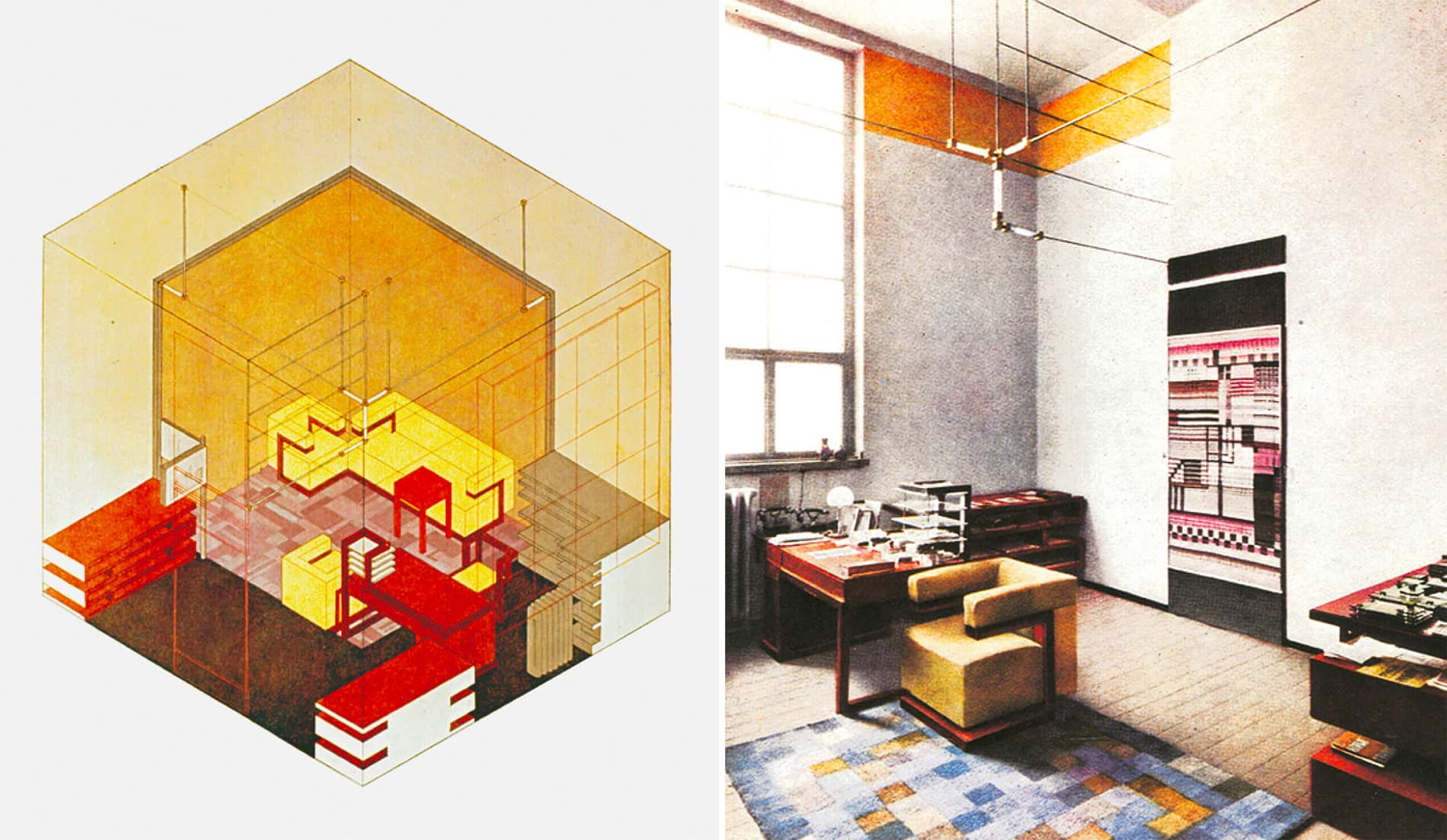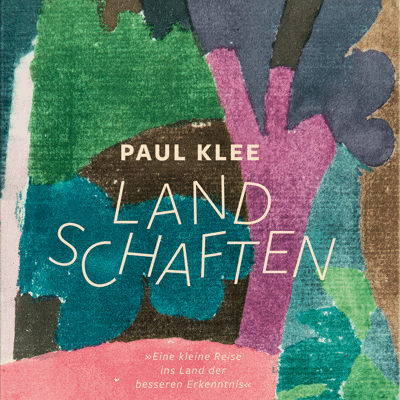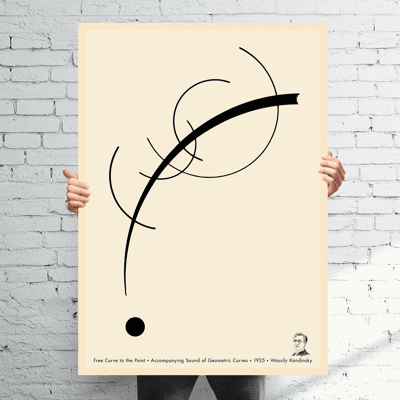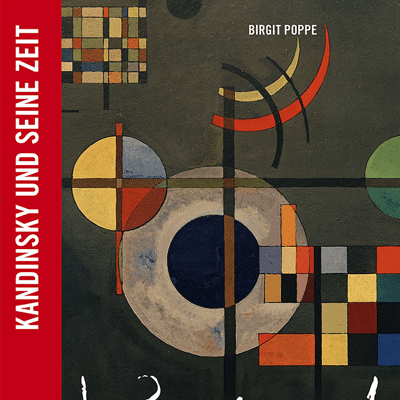

Wassily Kandinsky

Discover the Bauhaus
Modern design is all about simplicity and functionality and can be found in many products we're using on a daily basis.
Learn how the Bauhaus Movement influenced design history with its emphasis on theory and practice as taught by the masters.
The Soul of Bauhaus Design
An icon of German weaving art is the Bauhaus carpet by Gertrud Arndt from 1924, thus the current
production is a world premiere. The detailed documentation from the Bauhaus Archive and the Arndt family were used as a model for the
re-edition.
An icon of German weaving and the Bauhaus is the Bauhaus carpet No. 2 by
Gertrud Arndt from 1924, because the single copy produced at that time was found in the office of the Bauhaus founder Walter Gropius in
Weimar. This director's office also served as a showroom where works from the various workshops were presented to visitors (see fourth
illustration). Walter Gropius' well thought-out architectural spatial composition formed a total work of art of various Bauhaus works;
the basis was the square geometry of Gertrud Arndt's carpet. The designer carpets or Drechlse carpet were based on the detailed
documentation from the Bauhaus Archive as well as Gertrud Arndt's family records as a source for the re-edition. The Bauhaus Carpet No.
2 consists of 192 hand-knotted specifically arranged squares, the basic colour spectra are different shades of blue and grey, which are
broken towards the middle by light and dark yellow squares.
Gertrud Arndt began her
studies at the Bauhaus in Weimar in autumn 1923. Actually, she wanted to become an architect, but she was - like many other Bauhaus
students - assigned a place to study weaving. There she designed two carpets, one of which was used as a reference in the office of
Walter Gropius. After finishing her studies she concentrated on photography. Together with her husband, the Bauhaus student Alfred
Arndt, she went to Probstzella in Thuringia in 1927, where her husband was involved as an architect in the construction of the "Haus des
Volkes". Two years later, the couple returned to the Bauhaus in Dessau after Alfred Arndt was appointed head of the extension workshop
by the Bauhaus director Hannes Meyer in 1929. In Dessau, Gertrud Arndt then created a highly acclaimed series of photographic
self-portraits.

The man who wrote the rules. After first enrolling to study architecture at the Technical University
of Munich, Walter Gropius continued his studies at the University of Charlottenburg-Berlin, which he left in 1908 without completing his
diploma. Gropius joined the office of Peter Behrens in the same year, where he worked alongside a number of architects who would become
luminaries in their profession, including Ludwig Mies van der Rohe, Le Corbusier, and Dietrich Marcks.
After working for Behrens for two years, Gropius established his own practice for architecture and industrial
design in 1910. His output in this period included wallpapers, mass-produced interior furnishings, car bodies and even a diesel
locomotive.
The Fagus Factory in Alfeld an der Leine, which he designed together with Adolf
Meyer, would be his first major architectural work. With its transparent façade of steel and glass, this factory building is widely held
to be a pioneering work of what later became known as »Modern Architecture« evolving eventually in the 1920s into the »Neues Bauen« or
»New Objectivity« movement. The Fagus Factory was awarded UNESCO World Heritage status in June 2011.
After the First World War Gropius became a founding member of the Bauhaus: in 1919 he succeeded Henry van de
Veldes as the Director of the Großherzoglich-Sächsischen Hochschule für Bildende Kunst in Weimar (Thuringia) and renamed the institute
»Staatliches Bauhaus in Weimar«. Gropius held the office of Director in Weimar until 1926 and subsequently in Dessau. He was succeeded
by Ludwig Mies van der Rohe, who directed the Bauhaus until its closure in 1933. Gropius immigrated to England in 1934, following a
smear campaign by the Nazis, who branded the Bauhaus a »Church of Marxism«. In 1937 he relocated to Cambridge, USA, where he served as a
professor of architecture at Harvard University’s Graduate School of Design.
Wassily Kandinsky Composition VIII Rug
Wassily Kandinsky Composition X Rug
Wassily Kandinsky Gloomy Situation Rug
Wassily Kandinsky Surfaces Meeting Rug
Wassily Kandinsky Art
Wassily Kandinsky Circles in a Circle 1923
Wassily Kandinsky Composition 1944 Rug
Wassily Kandinsky Sky Blue Rug

Bauhaus Design Carpet
An icon of German weaving and the Bauhaus is the Bauhaus carpet by Gertrud Arndt from 1924, because the single copy produced at that time was found in the office of the Bauhaus founder Walter Gropius in Weimar.
This director's office also served as a showroom where works from the various workshops were presented to visitors.
F51 Ground-Breaking Cube
In 1922/23 Gropius designed his strictly cubic director's room in Weimar with his own designs and those of
other Bauhäusler.
The reeditions of the Bauhaus models produced by Tecta are approved by
the Bauhaus Archive in Berlin and have the original Bauhaus signet of Oskar Schlemmer, master at the Bauhaus in Weimar and Dessau. The proportions of the Bauhaus models are exactly the same as those of the originals.

Teapot TAC Walter Gropius
One year after Gropius' death, Rosenthal submitted his design for the TAC 1 Teapot, which was honored with an if DESIGN AWARD 1970. The teapot distinguishes itself through Gropius’ typically simple geometrical forms that certainly carry out his significant architectural Bauhaus handwriting.








































